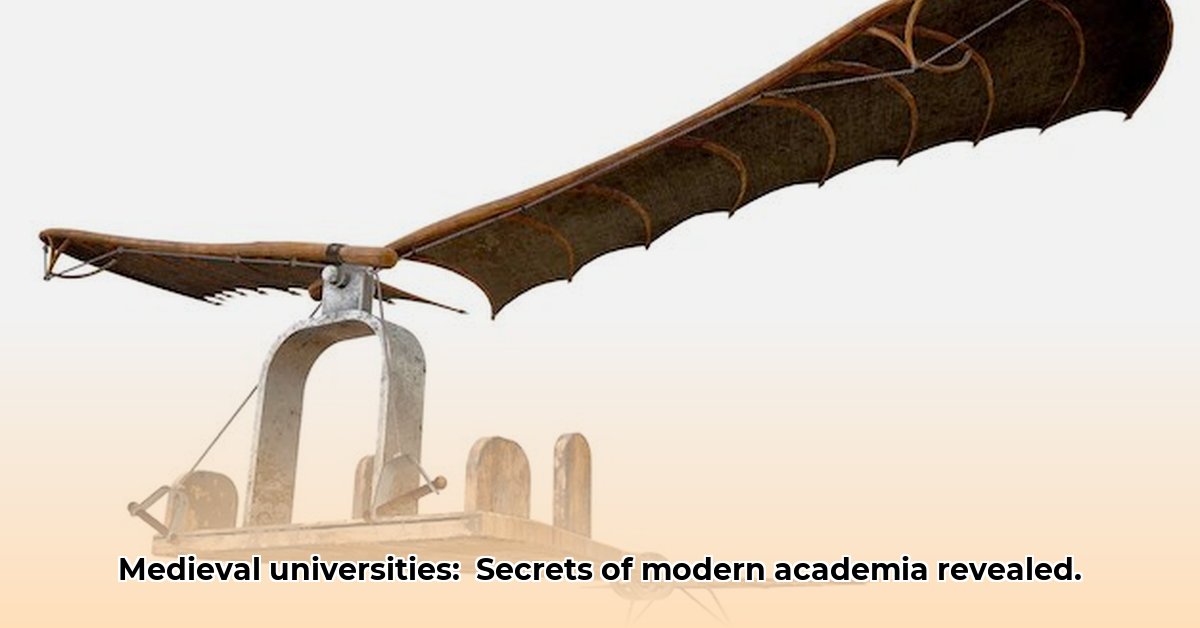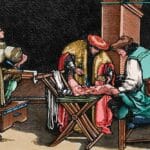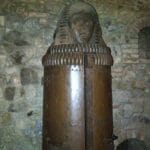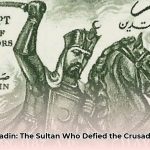You probably picture modern universities as a pretty recent invention, right? Think towering buildings, cutting-edge research, and maybe even a bit of a stuffy atmosphere. But guess what? The whole idea of a university – the system, the structure, the whole shebang – actually started way back in the Middle Ages! That’s right, a time most people think of as dark and backward actually gave birth to higher education as we know it. The invention of the printing press greatly accelerated the spread of knowledge. This article dives into the unexpected story of how medieval universities were born, how they fought to survive, and how their surprisingly modern ideas still affect colleges today. It’s a history full of fascinating characters, surprising twists, and lessons that are still relevant centuries later. Learn more about the printing press.
The University System: A Surprising Invention of the Middle Ages
Imagine walking through a bustling medieval city. Cobblestone streets wind past cramped workshops and towering cathedrals. But tucked away in rented halls or even private homes, something revolutionary was happening: the birth of the university system. It wasn’t a grand, planned affair orchestrated by kings or popes. Instead, universities sprouted organically, a surprising byproduct of students’ thirst for knowledge and scholars’ ambition to share it. It’s a story not of grand pronouncements, but of gradual growth, adaptation, and unexpected power shifts.
This wasn’t your typical top-down institutional creation. Think of it more like a loose network, a collective of individuals united by a shared passion for learning rather than a strict hierarchy dictated from above. There weren’t imposing stone buildings; instead, early universities often resembled a cluster of rented rooms or even a professor’s own house where eager students gathered to learn. They were essentially informal learning communities that gradually solidified.
Student Empowerment: Shaping Curriculum and Faculty
The role of students is crucial in understanding this unusual historical development. They weren’t just passive recipients of information; they were active participants, shaping the very fabric of the university system. Their collective voice held surprising power; their numbers gave them leverage. Think of it like a very early labor union, but instead of better wages for factory work, they negotiated for better classes, more qualified teachers, and even influence over the curriculum. They essentially dictated the terms of their education, ensuring that the universities catered to their needs and desires. This active role laid the groundwork for the academic freedom and student-centered learning we still value today. Their influence wasn’t subtle; they were the engine driving the university’s development.
A Solid Foundation: The Medieval Curriculum
The curriculum itself was surprisingly structured, forming a solid base for modern disciplines. Two core components – the Trivium and the Quadrivium – formed the intellectual backbone of medieval learning. The Trivium focused on improving communication and analytical skills through grammar, logic, and rhetoric. It was a training ground for critical thinking, helping students to dissect arguments, structure their thoughts, and express themselves effectively – skills still prized in modern academia. The Quadrivium, on the other hand, explored the mathematical and scientific world, encompassing arithmetic, geometry, astronomy, and music. This blend of verbal and quantitative skills created a well-rounded education, preparing students for a broad range of professions and intellectual pursuits. This foundation laid the groundwork for our modern scientific method and many of the fields we study today.
Resilience and Risk: Navigating a Turbulent World
The path to establishing these institutions wasn’t easy. These early universities faced numerous challenges. Conflicts with the powerful Church over religious dogma and intellectual freedom were frequent. There were also power struggles with local authorities and internal disputes over governance and resources. But remarkably, these early universities proved remarkably resilient. They carefully navigated these complex political and religious landscapes, constantly adapting to survive, and even thrive. Their capacity for change, their agility in the face of conflict, ensured that they evolved and persisted – a testament to their importance and value. This adaptability is a key element in their long-term success, a quality that continues to resonate in today’s dynamic educational landscape.
The Modern Echo: A Lasting Legacy
The impact of medieval universities is profound and long-lasting. These seemingly simple gatherings of students and scholars preserved and transmitted classical knowledge, fostering intellectual debate and the development of specialized fields like law and medicine. The emphasis on independent thought, scholarly discourse, and rigorous training – all hallmarks of modern higher education – can be traced back to these medieval precursors. It’s not an exaggeration to say that the very structure of our modern system, from the organization of departments to the methods of teaching, owes a considerable debt to the innovations and resilience of medieval universities. Their influence continues to reshape how we approach learning, research, and even the social organization of knowledge itself.
Two Systems Compared: Medieval vs. Modern Universities
| Feature | Medieval University | Modern University |
|---|---|---|
| Structure | Decentralized, student-influenced, organically grown | Centralized, hierarchical, complex bureaucratic structures |
| Location | Often rented spaces, private homes, limited facilities | Extensive campuses, dedicated buildings, specialized labs |
| Curriculum | Trivium & Quadrivium, focused on classical texts | Diverse range of disciplines, specialized research, evolving |
| Student Role | Active participants, significant influence on structure | Diverse student body, varying degrees of influence |
| Funding | Student fees, patronage, Church support (occasionally) | Government funding, endowments, tuition fees, grants, etc. |
The story of the medieval university system isn’t just a historical curiosity; it’s a powerful reminder of the organic nature of progress. It was a blend of ambition, necessity, and the surprisingly dynamic influence of students. It’s a testament to human ingenuity and the enduring power of a shared desire for knowledge, a legacy that continues to resonate in the halls and lecture theaters of universities worldwide today, constantly evolving as the world changes around it. Understanding this history helps us better understand the challenges and opportunities facing higher education, even now.
Decentralized Structures: Survival and Evolution in the Middle Ages
The medieval university wasn’t a monolithic entity. Instead, it emerged as a surprisingly decentralized network of independent institutions, each with its unique character and challenges. This decentralized nature profoundly impacted its long-term survival and evolution in fascinating ways.
Autonomous Guilds: The Rise of the Universitas
Universities weren’t centrally planned. They organically grew from earlier cathedral and monastic schools. The key innovation? The universitas. Think of it as a self-governing guild, uniting masters (professors) and students. This guild structure provided a protective framework, negotiating privileges with town authorities and establishing educational standards. This internal self-governance, rather than top-down control, is critical to understanding the universities’ resilience.
Imagine the scene: Bologna in the 12th century. Students, drawn from across Europe, congregated around renowned lecturers. These students, rather than being passive recipients of knowledge, actively participated in shaping their education. Through their universitas, they negotiated fees, curricula, and even the appointment of professors. This bottom-up approach stood in stark contrast to the centralized control typical of other institutions of the time.
Niche Specialization: Competition and Innovation
This decentralized model fueled competition. Different universities specialized in different fields. Bologna became a powerhouse of legal studies, while Paris excelled in theology. This specialization fostered innovation. Universities constantly sought to attract the best scholars and students, leading to a dynamic intellectual environment. The competition spurred them to adapt, introducing new methodologies and engaging with cutting-edge ideas.
Did this system always work seamlessly? Of course not. Internal conflicts between students and masters, “town versus gown” conflicts, and power struggles with Church and state were commonplace. But the decentralized structure provided a degree of resilience. Challenges in one university didn’t necessarily cripple the entire system.
Adapting to the Black Death: Adversity and Agility
The Black Death decimated Europe’s population in the 14th century. Many institutions crumbled. But the universities, thanks to their flexible structure, adapted. Existing universities re-evaluated their curricula, and new ones emerged as societal needs shifted. The decentralized framework ensured that educational continuity wasn’t completely reliant on any single institution’s survival. It’s a testament to the adaptability inherent in the decentralized model.
Self Governance: The Enduring Impact of Decentralization
The decentralized nature of the medieval university system, with its emphasis on self-governance and competition, contributed significantly to its long-term survival. The lessons learned—the importance of academic freedom, the value of decentralized governance, and the need for adaptability—continue to resonate in modern higher education. The decentralized structure allowed for the flourishing and the survival of scholarship even in the face of great adversity. This dynamic approach directly shaped the landscape of modern academia.
Key Takeaways:
- The universitas structure provided a framework for self-governance, crucial for the university’s survival.
- Decentralization fostered competition and specialization, driving innovation across different institutions.
- Adaptability in the face of crises, like the Black Death, was directly linked to the flexible, decentralized structure.
- The decentralized medieval model has left a lasting legacy, shaping modern universities’ structures and values.
Medieval University Pedagogy: Curriculum, Teaching Methods, and Student Life
Medieval universities stand as intellectual forebears of modern academia. Examining their pedagogy—their curriculum, teaching methods, and the daily realities of student life—reveals the foundations upon which Western education was built. These elements were pivotal in shaping Western education and culture.
Building Blocks of Knowledge: The Seven Liberal Arts
Imagine stepping back in time. You’re a student in a medieval university. What awaits you? The core curriculum, the bedrock of your education, is built upon the Seven Liberal Arts. This wasn’t some arbitrary selection; it represented a carefully curated path to intellectual enlightenment. The Trivium – grammar, logic, and rhetoric – provided the tools for critical thinking and effective communication. Grammar focused on understanding the structure of language and interpreting texts with precision. Logic, or dialectic, armed students with the ability to construct sound arguments and identify fallacies. Rhetoric taught the art of persuasive communication, essential for effective debate and public speaking.
The Quadrivium – arithmetic, geometry, astronomy, and music – built a foundation in mathematical and scientific reasoning, connecting the earthly to the celestial. Arithmetic explored the theoretical properties of numbers rather than mere calculation. Geometry delved into spatial relationships and the principles of measurement. Astronomy (often intertwined with astrology) sought to understand the cosmos and its influence on earthly events. Music was seen as a mathematical art, exploring harmony and proportion. This structured approach aimed to harmonize reason and faith.
The curriculum wasn’t static. As universities matured, so did their offerings. Theology, law, and medicine emerged as distinct faculties, reflecting the broadening scope of intellectual inquiry. This evolution shows the inherent adaptability of these early institutions. They responded to societal needs and burgeoning intellectual currents, organically evolving their educational mission.
Debate and Disputation: Dynamic Teaching Methods
Lectures were central, but they weren’t passive affairs. Students actively engaged through debates and disputations, sharpening their reasoning skills in structured arguments. The lecture format usually involved a professor reading from a standard text, followed by commentary and elaboration. Disputations, however, were more dynamic. They typically began with a question, followed by arguments for and against, culminating in a resolution by the professor. Think of it as a high-stakes intellectual sparring match, honing minds and challenging assumptions. This active learning model, strikingly similar to modern debate club practices, fostered critical thinking and analytical prowess.
A Tapestry of Life: Student Life in the Middle Ages
University life wasn’t just about books and lectures. Students, often from diverse backgrounds, formed vibrant communities. They lived, studied, and debated together, creating a unique social environment. Life wasn’t easy; poverty and hardship were present realities for many, forcing them to rely on each other for support. Housing was often basic, and students frequently shared rooms to save money. Food could be scarce, and students often supplemented their diets with whatever they could find. Yet, it was also a time of intellectual and personal growth, bonding students through shared experiences. Their lives shaped the very fabric of their institutions, forging a shared identity that transcended academic boundaries.
Student life also involved a degree of freedom and autonomy that was unusual for the time. Students formed their own guilds or “nations” based on their origin, providing mutual support and representation within the university. These organizations played a significant role in university governance and often had the power to influence the appointment of professors.
Shaping Higher Education: The Enduring Legacy
Medieval universities were far more than mere schools; they were incubators of intellectual innovation. They preserved classical knowledge, fostered critical thinking, and shaped the very structure of academic pursuits. Their impact resonates even today, influencing modern higher education principles and approaches. Did these medieval pioneers envision the long-term consequences of their creations? Perhaps not, but their lasting contributions are undeniable.
Economic and Social Impact of Medieval Universities on European Development
The medieval university: a surprising invention, yet a cornerstone of modern academia. How did these institutions, born from the ashes of antiquity, reshape Europe? The answer lies in their profound Economic and Social Impact of Medieval Universities on European Development.
Professionally Trained: The Birth of a Professional Class
Before medieval universities, expertise resided largely within monasteries. Universities, however, produced a new breed of professionals. Bologna’s law school—a key example—trained experts in Roman and Canon law. This wasn’t just academic; it was revolutionary. A standardized legal system fueled commerce. Imagine conducting business across vast distances with inconsistent, local regulations. Roman law provided the framework for a unified market, fostering economic expansion. Canon law, developed and taught within the universities, also shaped legal and ethical norms, influencing everything from marriage laws to property rights. This new class of legally-trained individuals became essential to the burgeoning legal, administrative, and commercial sectors of medieval European society, significantly affecting the Economic and Social Impact of Medieval Universities on European Development.
Catalyst of Growth: The University as an Engine of Growth
The economic impact wasn’t solely about trained professionals. Universities themselves became economic hubs. Students, professors and visiting scholars boosted the local economies. They created demand for goods and services. Local businesses, from booksellers and parchment makers to taverns and lodging houses, thrived on the presence of the university community. This positive feedback loop, fueled by intellectual capital, had a broad effect. Think of the multiplier effect from that inflow of money and expenditure—it was remarkable for its time. The establishment of such institutions played a clear part in altering the course of medieval economic progression and its Economic and Social Impact of Medieval Universities on European Development.
A Divided Church: The Papal Schism and its Economic Ripple Effect
The Great Western Schism provided a compelling case study. The split in the papacy saw a subsequent boom in university foundations, particularly in Germany. This wasn’t accidental. Rulers sought to enhance their legitimacy and attract skilled administrators by founding universities in their territories. New universities served as vital centers of learning, enhancing the skills of the workforce and bolstering economic growth. The connection between the establishment of new universities and growth in trade was, in this specific instance, particularly striking, clearly demonstrating the Economic and Social Impact of Medieval Universities on European Development.
Spreading Knowledge: Beyond the Classroom
Universities weren’t isolated islands of learning. They fostered exchange. The sharing of ideas—from legal concepts to financial practices like charge and discharge accounting—spurred innovation. The translation of classical texts, undertaken within the universities, made ancient knowledge accessible to a wider audience. This intellectual cross-pollination, powered by the university system, spread beyond their walls and touched various aspects of life, significantly impacting the Economic and Social Impact of Medieval Universities on European Development. This is a dynamic that continues to this day.
Modern Academia: The Long Shadow of the Medieval University
The legacy of these medieval institutions is undeniable. Their focus on structured learning, the cultivation of critical thinking, and the training of a skilled workforce all laid the groundwork for the modern university system. The principles of academic freedom, rigorous inquiry, and the dissemination of knowledge—all born within the walls of medieval universities—continue to shape our world. Their long-lasting influence underscores the enduring importance of those early institutions and their profound Economic and Social Impact of Medieval Universities on European Development.
Key Takeaways:
- Medieval universities fostered a new class of professionals crucial for economic development.
- The institutions themselves stimulated local economies through increased spending and activity.
- The Papal Schism serves as a compelling example of the link between university growth and economic expansion.
- Knowledge exchange facilitated by universities aided innovation across diverse fields.
- The medieval university system’s legacy continues to shape modern academia and economic structures.















